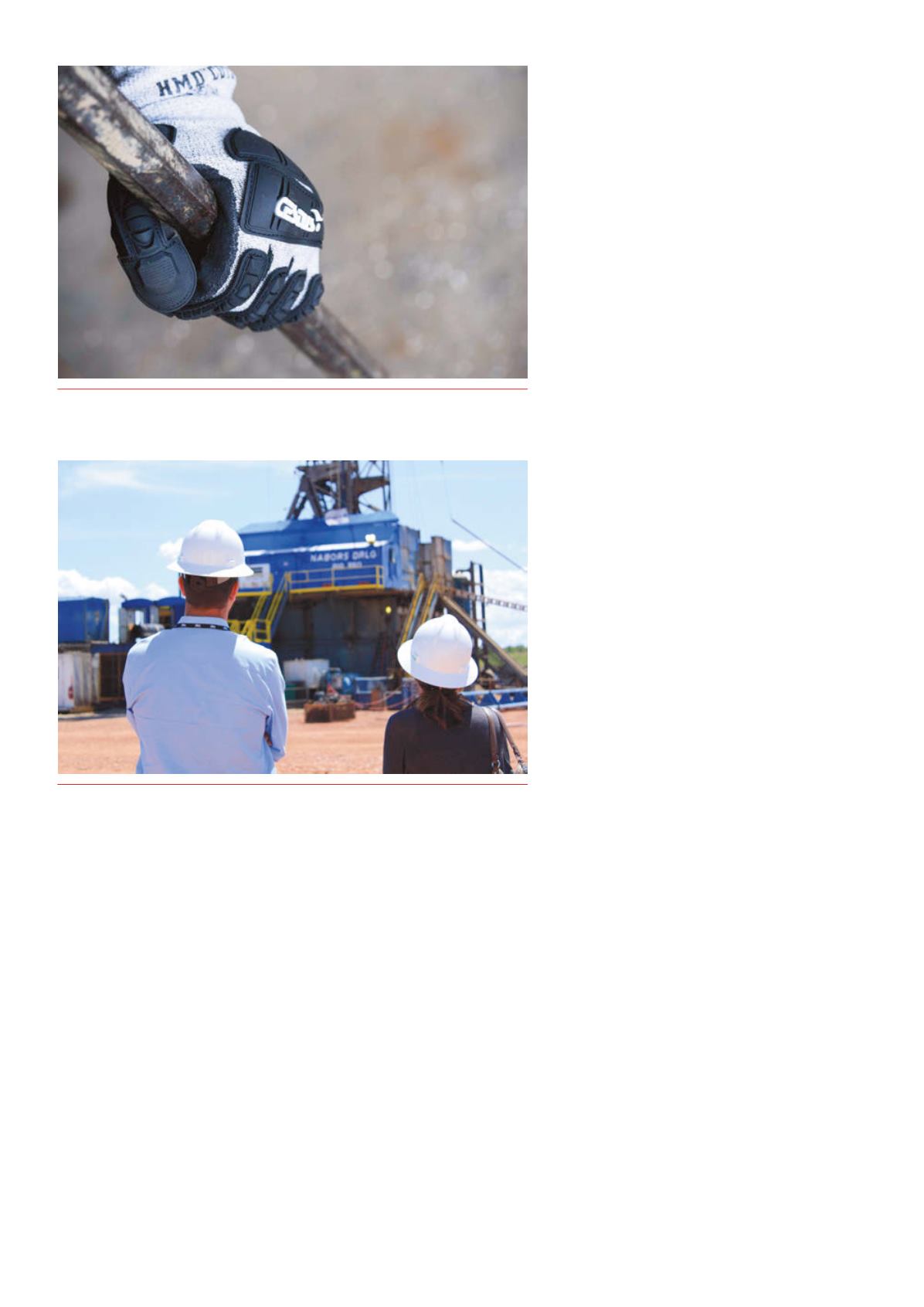
70 |
Oilfield Technology
December
2014
the world on new, extreme levels of performance their PPE can
bring to workers today. Many of the new developments in
PPE come at a cost, and not just monetary. General reluctance by
experienced workers has many causes, ranging from associating
brands they recognise with quality PPE, to colour preferences.
HSE professionals know that workers that are set against a
change in PPE, regardless of the reason, can cause new safety
programmes to stagnate. Performance PPE is generally more
expensive than its traditional counterparts, and there comes a
time when costs have to be weighed against their capacity to
reduce worker injury costs and boost productivity within a site.
Project Management Professionals (PMPs) are familiar with
cost performance indicators (CPIs). The CPI is an index showing
the efficiency of the utilisation of the resources on a project.
CPI can be calculated using the following formula:
Ì
Ì
CPI = earned value (EV)/actual cost (AC)
A CPI value above one indicates efficiency in utilising
the resources allocated to the project is worthwhile, while a
CPI value below one indicates efficiency in utilising the resources
allocated to the project is not worthwhile. The
real life application of this can be applied to the
acquisition of new, performance PPE and its effect
on the productivity of a jobsite; however, there are
several variables that do not necessarily translate into
trackable numbers.
Ergonomic improvements
New developments in PPE have included ergonomic
improvements, the introduction of high performance
engineered fabrics, and adjustments in the
testing methods for this new generation of PPE.
Musculoskeletal disorders, generating frequently
from repetitive stress injuries, make up 30% of all
workplace injuries that result in lost work days.
1
They
also account for one‑third of the money doled out in
workers compensation claims. With an estimated cost
of US$ 17 ‑ 20 billion/yr, employers are working with
the safety industry to make real changes to worksites
and procedures.
New departments focused solely on ergonomics
have sprung up in the past decade all around the
world, as HSE professionals begin to recognise the
fallout from repetitive stress injuries can linger for
years. Studies have proven a direct relationship
between ergonomic adjustments to lifting, seating
surfaces and workstation layouts and a reduction
in repetitive stress injuries on jobsites. Other ways
to reduce repetitive stress injuries include job duty
rotations and the introduction of additional, short
breaks. The PPE industry has also sought ergonomic
improvements by evaluating real life scenarios,
and adjusting the placement, spacing, rim size and
ease of application and removal in the development
of new products. The actual value of this boosted
productivity and reduced exposure to ergonomic
hazards is difficult to measure within the first year of
implementation. Repetitive stress injuries are a result
of an accumulation of repetitive positioning.
Engineeredfabricsandmaterials
The introduction of new, engineered fabrics
and materials is a more cut‑throat market
than the oil industry realises. This year, there were
more than 100 exhibitors from around the world at the
NW Apparel and Footwear Materials Show in Portland, OR. Local
and international textile shows are seeing increases in both
exhibiting companies, and attendees interested in the latest
material technology. For example, the race to produce the most
cut resistant fabric is officially underway, and there are new
developments each month. Intertek, a seasoned PPE testing
facility, has estimated that up to 25% of gloves submitted
recently have surpassed the EN 388 cut level‑five standards,
which max out at 5 N of downward force. When a glove surpasses
the EN 388 cut standards, it is not awarded an automatic cut‑five
rating. The glove then transitions to EN ISO 13997 testing
which utilises a straight blade cut with expanded levels of force
exerted on the glove. In the US, there is an additional need
to understand the ASTM F 1790‑05 cut test. The outdated cut
test is most similar to the EN ISO test, yet there is an update
to the test which makes the test outcomes more difficult to
draw parallels from. HSE professionals have a duty to educate
Figure 1.
With the advent of high performance engineered fabrics, oilfieldgloves are able
to combine protective elements suchas cut, impact and oil resistance. (Photo courtesy of
DavisMartin, Cestusline, Inc.)
Figure 2.
With newPersonal Protective Equipment (PPE) developments on the rise,
Healthand Safety Executive (HSE) professionals are pressedmore than ever to determine
the value and effectiveness of performance PPE. (Photo courtesy of Lindsey Gira.)


